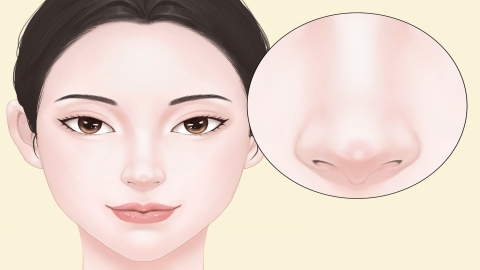What are the advantages and disadvantages of using costal cartilage for rhinoplasty?
Generally, costal cartilage rhinoplasty can increase nasal bridge height and reshape the nasal tip through surgical methods. The general reference price for costal cartilage rhinoplasty ranges from 8,000 to 50,000 yuan per procedure. Noticeable improvement is usually observed 3-6 months after surgery, although symptoms such as swelling and pain may occur. Costal cartilage rhinoplasty offers several advantages including natural appearance, good support, moldability, broad applicability, and high survival rate of the graft. However, it also has disadvantages such as significant surgical trauma, high technical demands for carving, risk of infection, cartilage absorption, and scarring. A detailed analysis is as follows:

I. Advantages
1. Natural Appearance
Due to the good biocompatibility of costal cartilage with surrounding tissues, postoperative rejection reactions are uncommon, resulting in a natural appearance that can maintain nasal shape for a prolonged period.
2. Strong Support
Costal cartilage has sufficient rigidity and supportive capacity, effectively supporting the nasal dorsum and making the nose appear straighter and more prominent. It is suitable for individuals requiring elevation of the nasal bridge, elongation of the nasal tip and columella simultaneously.
3. Moldability
Costal cartilage is relatively flexible and can be carved into the desired shape, length, thickness, and curvature to meet individual needs. Surgeons can precisely carve and shape it according to patients' facial features and aesthetic preferences.
4. Broad Applicability
Costal cartilage can not only be used for shaping the nasal bridge and tip but also for nasal elongation, fabrication of columellar struts, alar cartilages, and filling materials for nasal depressions, making it widely applicable.
5. High Survival Rate
As living tissue, costal cartilage lacks blood vessels but easily survives after implantation. It has a low absorption rate in the body, does not perforate the skin, and is well tolerated by the nasal tissues, thus having a high graft survival rate and low risk of rejection.
II. Disadvantages
1. Significant Surgical Trauma
Costal cartilage rhinoplasty requires harvesting cartilage from the patient's ribcage, which causes some trauma. Postoperative pain and swelling may occur, and a certain recovery period is needed.
2. High Technical Demands for Carving
After harvesting, costal cartilage needs to be precisely carved by a surgeon with strong aesthetic sensibility to avoid warping or deformation. Improper carving may compromise the surgical outcome.
3. Risk of Infection
Costal cartilage rhinoplasty involves incisions that, if not properly cared for postoperatively, may lead to complications such as infection or hematoma.
4. Cartilage Absorption
Following implantation into the nose, costal cartilage may undergo some degree of resorption. Although generally minimal and unlikely to significantly affect the cosmetic outcome, patients should be fully informed and prepared before surgery.
5. Scarring
During costal cartilage harvesting, a small incision is made on the ribcage, which may leave a scar. Patients who are prone to scarring should discuss this with their surgeon beforehand to choose an appropriate surgical approach.
It is recommended to undergo costal cartilage rhinoplasty at a reputable hospital under the guidance of a qualified surgeon to ensure the effectiveness and safety of the procedure. Patients should avoid strenuous physical activity after surgery to ensure optimal results.




